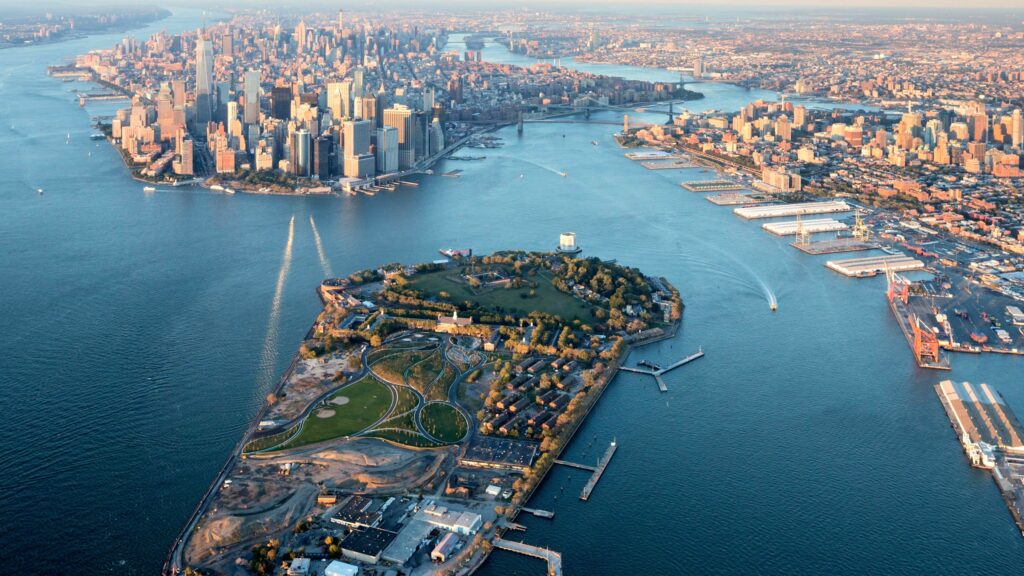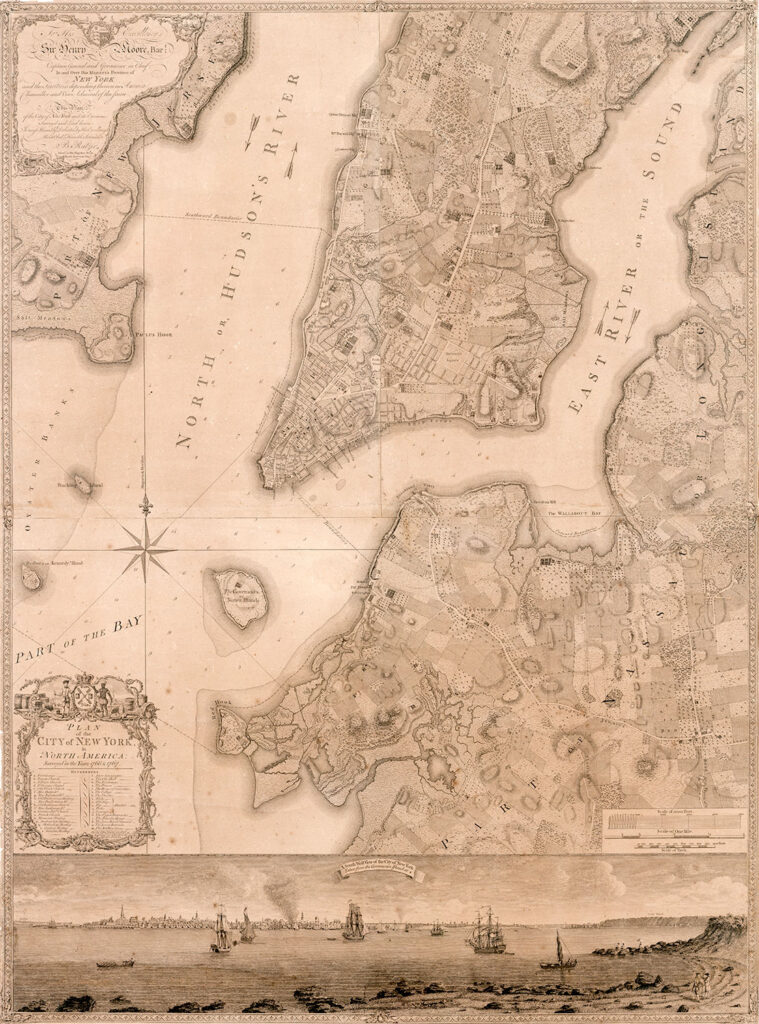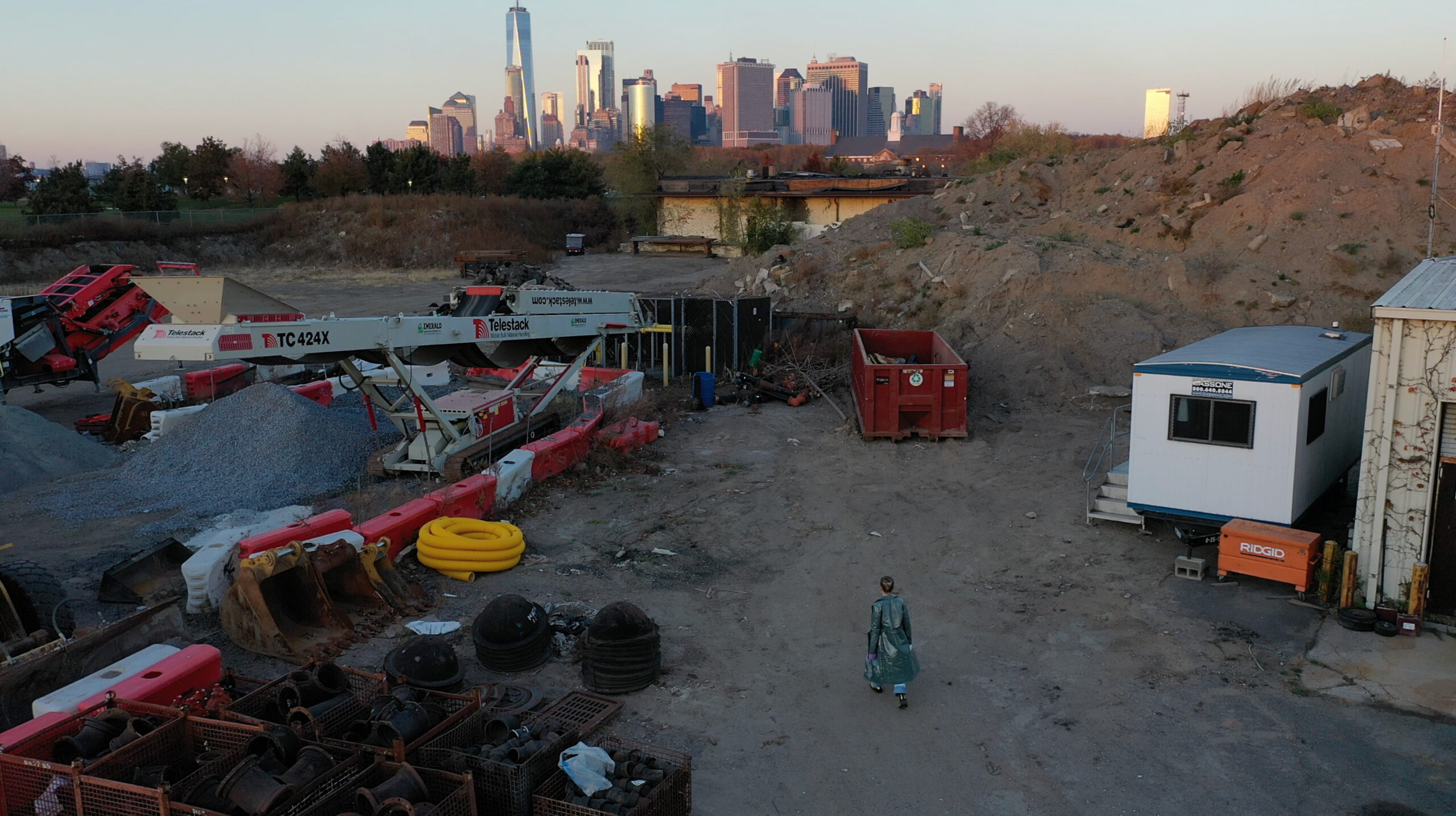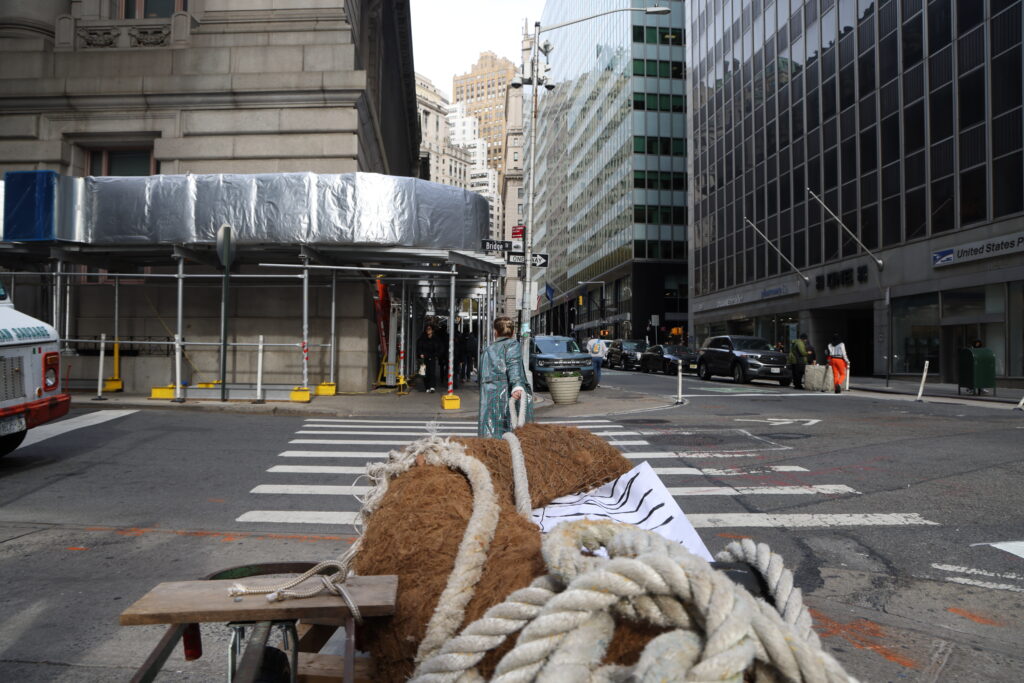Exhibition: Institute of Public Architecture, Governors Island, New York.
Medium: Spatial Intervention, Mobile installation, performance, exhibition on Governors Island.

In the midst of the 2024 U.S. elections, Lesia spent three months on Governors Island, New York, immersing herself in U.S. political dialogues during a pivotal moment in history. This often-overlooked place—which has long served as an extension of New York’s power—was where Dutch colonialists first arrived before establishing themselves in Manhattan. From this tranquil vantage point, she saw Manhattan in a new light while working closely with activists on the island and engaging with its communities and histories. It was a time of political transition, with the U.S. elections shaping urgent conversations about governance, control, and identity. These reflections became the foundation of her work The Governing Island—a mobile installation and performance during election days that encourages civil agency and provokes a discussion about capitalist Manhattan’s current values.
In 1637, the Dutch controversially purchased Governors Island from the Lenape, the Indigenous people of what is now New York City, in exchange for beads, nails, and two axe heads. This agreement likely represented a temporary use permit rather than a permanent transfer of land. The Lenape were forcibly removed from their ancestral territory, while Manhattan emerged as a symbol of capitalist expansion, built upon the geological forces that form its bedrock.
Historically, Governors Island has served both as a protector and an extension of the city’s influence, reflecting Manhattan's dependence on surrounding territories. Over time, it evolved from Indigenous foraging grounds to a colonial outpost, then a military stronghold, and is currently undergoing yet another questionable transformation into a “sustainability hub”—an urban entity dependent on energy grids, pipelines, waste flows, and other infrastructures that sustain the city.
Today, as the U.S. stands at a political crossroads, the forces that shaped this island’s past—control, ownership, and power—are once again at play. With the elections exposing deep fractures in governance, The Governing Island provokes a critical dialogue: As America reconsiders its future, who truly holds the power to govern? And what values should define our cities moving forward?
This project imagines a moment of reversal: a day when Governors Island “occupies” Manhattan, not to extend its control but to restore the values that existed before its sale to the Dutch.
At the heart of this intervention are the 'characters'—sculptural forms created from materials sourced directly from the island, physical remnants of its evolving landscape and history. Connected like beads, these characters become modern ‘treasures,’ reflecting contemporary political and social shifts.
In collaboration with environmental activists from the island, the mobile installation—embodied by these characters—travels to Manhattan. As the beads move through the city, the island symbolically reclaims space, governance, and identity. By occupying Manhattan’s streets, The Governing Island disrupts the city’s habitual flow, challenging assumptions of ownership and governance. In a metropolis where regulation is often seen as fixed, the installation reveals the fluidity of laws and the imaginative space in which they exist. It opens a temporary gap in the city’s structured order, allowing new dialogues to emerge and alternative forms of agency to be envisioned.
In this way, the act of moving through the city becomes an act of governance—redefining space, reclaiming presence, and unsettling the narratives of control that shape our urban environments.
Here, Governors Island becomes Governing.





